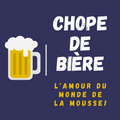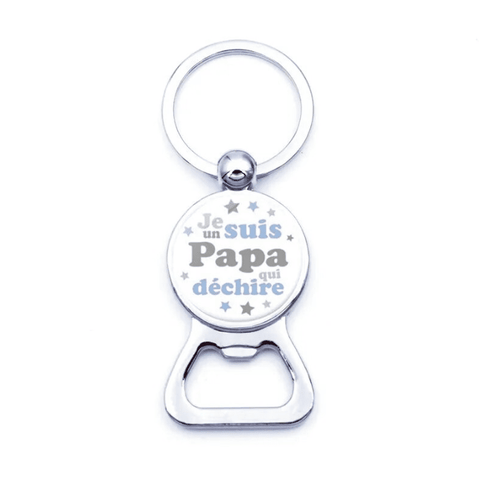
7 Intriguing Facts About Viking Runes You Probably Don't Know
of reading
The Vikings were known for their ferocity in battle , their maritime prowess, and their rich cultural heritage. Among their many cultural contributions were runes, a writing system used throughout the Viking world.
While many people are familiar with runes in general, some fascinating facts about them are less well-known. Did you know, for example, that the word "rune" itself comes from an Old Norse word meaning "secret" or "mystery" ? Or that the Vikings used runes not only to communicate, but also for magical purposes?

The Vikings were also heavy drinkers, and several Viking tankards have survived from their time. To say that their heavy beer consumption caused them to hallucinate about runes is false.
In this article, we'll explore seven intriguing facts about Viking runes that you probably didn't know. From the origins of the runic alphabet to the mysterious inscriptions found on Viking artifacts , we'll delve into the fascinating world of these ancient symbols and uncover some of the secrets they hold.
So grab a horn of mead and join me on a journey into the world of Viking runes! Simply click on the product to check out this Viking glass !
The History of Viking Runes
Viking runes were a writing system used by the Vikings and other Germanic peoples of Northern Europe from the 2nd to 11th centuries. The word " rune " means "secret" or "mystery" in Old Norse. Runes were carved into stones, jewelry, weapons, tools, and other wooden or metal objects.

Runes were used to write messages, but also for magical purposes, to invoke supernatural powers or to predict the future. Runes were often used in funeral rites, wedding ceremonies, and healing rituals.
Runes were considered sacred and their use was reserved for priests, warriors, and tribal leaders. Runes were a writing system older than the Latin and Cyrillic alphabets. The Vikings were unfamiliar with Roman script and used runes to write their language, Old Norse.

Runes were used primarily in Scandinavian countries , but also in Iceland, Great Britain, Ireland, Germany, and other parts of northern Europe.
The Importance of Viking Runes
The origin of Viking runes dates back to the Germanic Iron Age, around 200 BC. The Germanic peoples used symbols to represent sounds and concepts. Over time, these symbols evolved into a more elaborate writing system known as the runic alphabet .
The earliest runic alphabets consisted of 24 symbols, called the Elder Futhark . The runic alphabet was used for centuries by the Germanic peoples to write their language.

In the 8th century, the Vikings adopted the runic alphabet and adapted it to their own language, Old Norse . The Vikings added new symbols and changed the order of the symbols to better fit their language.
The runic alphabet used by the Vikings is known as the Younger Futhark. The Younger Futhark consisted of 16 symbols and was in use until the 11th century.
Viking runes were important to Viking culture as they were a means of communication, but also a way to preserve their cultural heritage. Runes were used to write poems , sagas, and other literary works that have survived to this day.

Runes were also used to record important historical events , such as battles, royal marriages, and tribal alliances. Runes were also important to Viking religious and magical practices.
Viking priests used runes to summon spirits and gods , to cure illnesses, and to predict the future. Viking warriors carved runes into their weapons and shields to give them magical powers and to protect them in battle.
The different types of Viking runes
There are two main types of Viking runes: the Elder Futhark and the Younger Futhark. The Elder Futhark was the first runic alphabet used by the Germanic peoples, while the Younger Futhark was used by the Vikings to write their language, Old Norse.

The Elder Futhark consisted of 24 symbols, while the Younger Futhark consisted of 16. The symbols in both runic alphabets have specific meanings, which go beyond their simple use for writing letters. Each rune has a magical or symbolic meaning , which can be used in religious rituals or divinatory practices.
7 Intriguing Facts About Viking Runes
Fact #1
Runes weren't just used for writing. Runes were often used for magical and divinatory practices. The Vikings believed that runes had magical powers and could be used to summon spirits, cure illnesses, and predict the future.

Viking priests used runes to communicate with gods and spirits, as well as to cast spells and curses.
Fact #2
The word "rune" comes from an Old Norse word meaning "secret. " The word "rune" comes from the Old Norse word "rún," meaning "secret" or "mystery." The Vikings considered runes sacred, and their use was reserved for priests, warriors, and tribal leaders.
If this article has made you thirsty, I'd like to take this opportunity to introduce you to our famous Viking tankard ! Simply click on the photo to see it.
Runes were often used for magical and divinatory practices, and their meaning was often kept secret .
Fact #3
Each rune has a specific meaning . Each rune in the runic alphabet has a specific meaning, which can be used in magical or divinatory practices.

For example, the "Fehu" rune represents wealth and prosperity, while the "Uruz" rune represents strength and vitality. Runes can be used to invoke supernatural powers, cure illnesses, or predict the future.
Fact #4
Runes were often used for divination , the practice of predicting the future or obtaining answers to questions using sacred symbols or objects.
Still thirsty for knowledge? Then this Viking skull tankard is for you! Simply click on the photo to see it!
Viking priests used runes to predict the future , to communicate with gods and spirits, and to cast spells and curses.
Fact #5
The Elder Futhark is the oldest known runic alphabet . It was used by the Germanic peoples from the 2nd to the 8th century to write their language. The Elder Futhark consisted of 24 symbols and was used to write poems, sagas, and other literary works.

The symbols of the Elder Futhark have specific meanings, which can be used in magical and divinatory practices .
Fact #6
The Younger Futhark was developed for more efficient writing . In fact, the Younger Futhark was developed by the Vikings for more efficient writing in Old Norse. The Younger Futhark included 16 symbols and was in use from the 8th to the 11th centuries.
Here's my favorite mug, and the one that inspired me to write this article: our Viking Runes Beer Mug . Just click on the photo to see it!
The Vikings changed the order of the symbols and added new symbols to better fit their language. The Younger Futhark was easier to write than the Elder Futhark , which allowed for more widespread use of runes in everyday life.
Fact #7
The use of Viking runes declined with the spread of Christianity . Specifically, use began to decline in the 11th century with the spread of Christianity in Scandinavia.
Christian priests considered runes to be pagan symbols and replaced them with the Latin alphabet to write the vernacular. The Vikings continued to use runes to write poems and sagas, but their use for magic and divination declined.
And if Odin decided that his son Thor should be armed with a hammer, it was perhaps so that he could open his bottles! So I present to you Thor's hammer bottle opener ! Just click on the photo to see it!
Viking runes have thus lifted some of their mystery, but not completely. This is what continues to fascinate us. The success of the TV series has considerably increased the general public's interest in our beloved Vikings.
This proud people is now better understood by most people than just a band of barbarians as before. Runes are only one part of their fascinating history.
Writing these blog articles takes me a lot of time for research, writing, images, etc. You have noticed, there are no unwanted advertising banners for insurance, credits or other but suddenly it does not bring me any source of income.😢
If you had the patience to read my article to the end, know that you can benefit from a 20% discount on your entire order by entering the code BLOG20 in your basket.
I'm reserving this code for my most loyal readers who discovered our site through the articles I lovingly post! FYI, the code cannot be combined with other discount codes because you can't overdo it, eh! 20% off doesn't leave us much room to spare, but at least I'm rewarding my readers.
To encourage and support me, don't hesitate to buy something from us! 😊
If you're looking for a Viking tankard, you'll definitely find what you're looking for among our models; just click on Viking Beer Mugs on our site.
To discover all of our products, click on this link: Chopedebiere .
If you would like to read one of my other articles, I suggest the history of the Icelandic Vikings or the history of the lid on beer mugs .
To see all my other blog posts, click on Chopedebiere Blog.


















